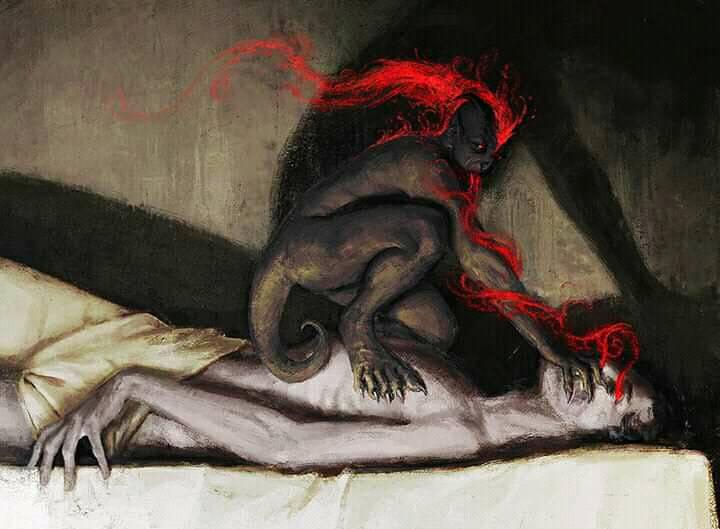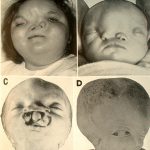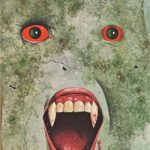In his 1931 treatise On the Nightmare, Ernest Jones noted that vampires are symbolic of several unconscious drives and defense mechanisms. Emotions such as love, guilt, and hate fuel the idea of the return of the dead to the grave. Desiring a reunion with loved ones, mourners may project the idea that the recently dead must in return yearn the same.
From this arises the belief that folkloric vampires and revenants visit relatives, particularly their spouses, first. In cases where there was unconscious guilt associated with the relationship, however, the wish for reunion may be subverted by anxiety.
This may lead to repression, which Sigmund Freud had linked with the development of morbid dread. Jones surmised in this case the original wish of a (sexual) reunion may be drastically changed: desire is replaced by fear; love is replaced by sadism, and the object or loved one is replaced by an unknown entity.

Many legends report creatures draining other fluids from victims, such as inccubi and succubi:
“the simple idea of the vital fluid being withdrawn through an exhausting love embrace is complicated by more perverse forms of sexuality, as well as by a mixture of sadism and hate”.
In many cases, the victim of an undead vampire is attacked while sleeping. This phenomena often resembles attacks by such entities as the Anglo-Saxon mare, the Scandinavian mara, the Slavic mora, and sometimes even the incubus or succubus.
In the case of the Buckinghamshire vampire which occurred in England in 1196 and was chronicled by William of Newburgh in his Historia Rerum Anglicarum, the revenant was said to attack his widow while she was asleep. He awakened and alarmed her by leaping upon her and almost killing her with the full weight of his body. The same thing occurred every night. The widow then solved the problem by having relatives stay with her at night to help keep her awake.
But then the revenant began to attack the relatives in their homes in the same way. And finally everyone in the town was afraid of falling asleep. The corpse was eventually exhumed and found to be in a fresh condition. The townspeople had initially wanted to cremate the corpse but the wishes of the local bishop prevailed. The corpse was reburied with a holy scapula placed over its chest. And it never bothered anyone again.
Such a phenomenon can be explained by sleep paralysis, a condition that occurs at least two or three times in every man or woman’s life.








